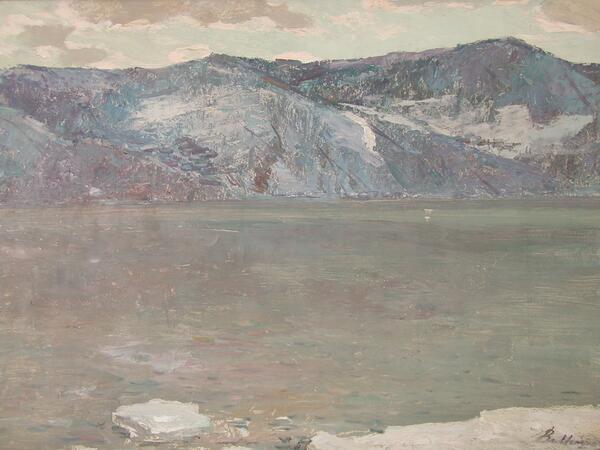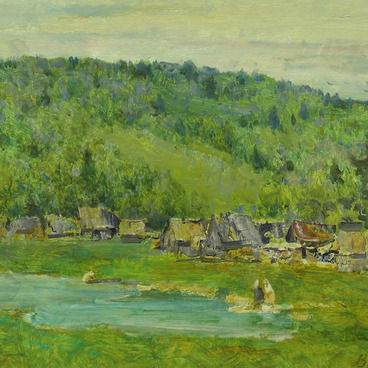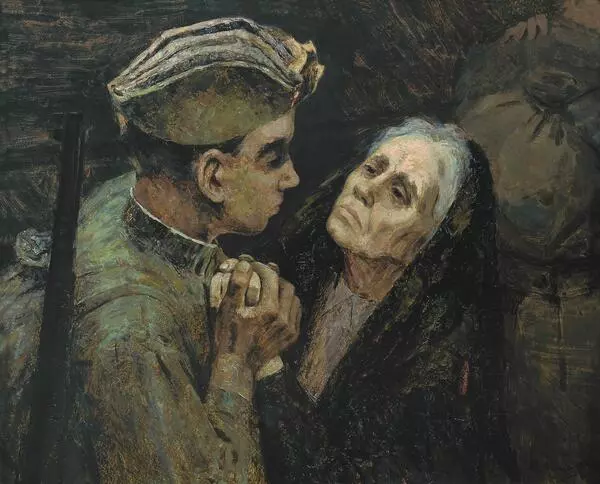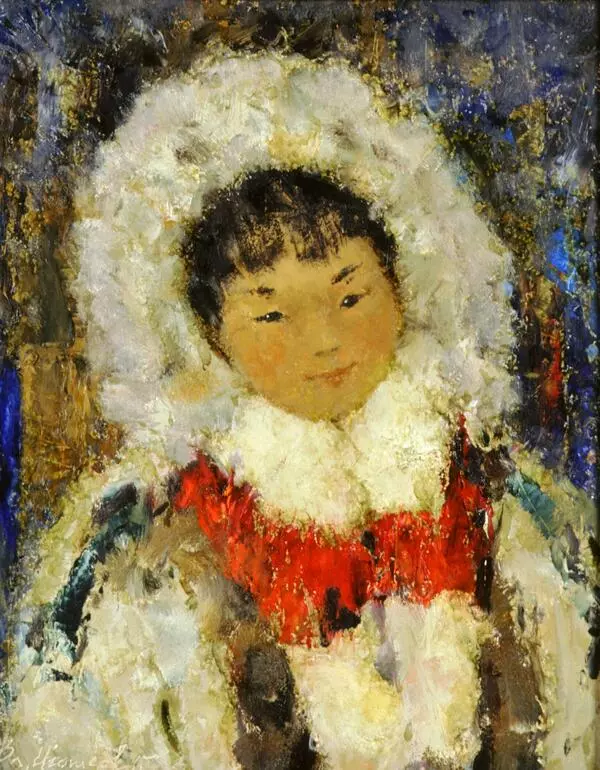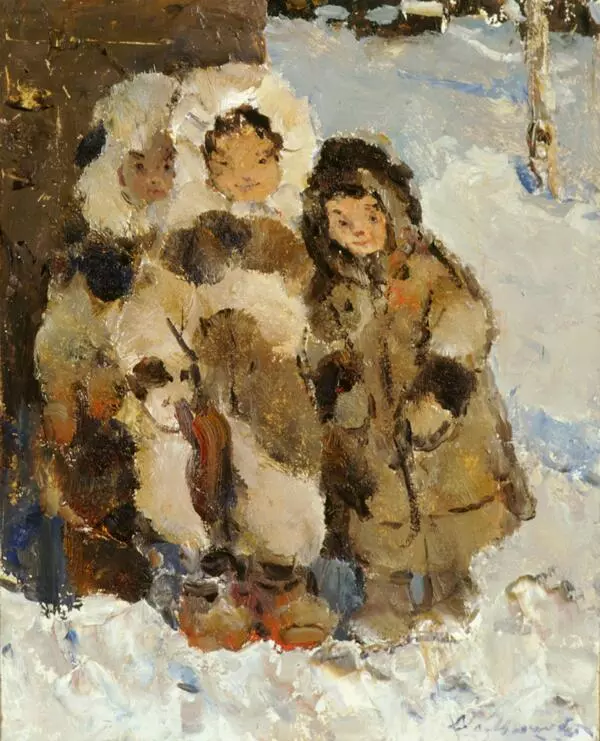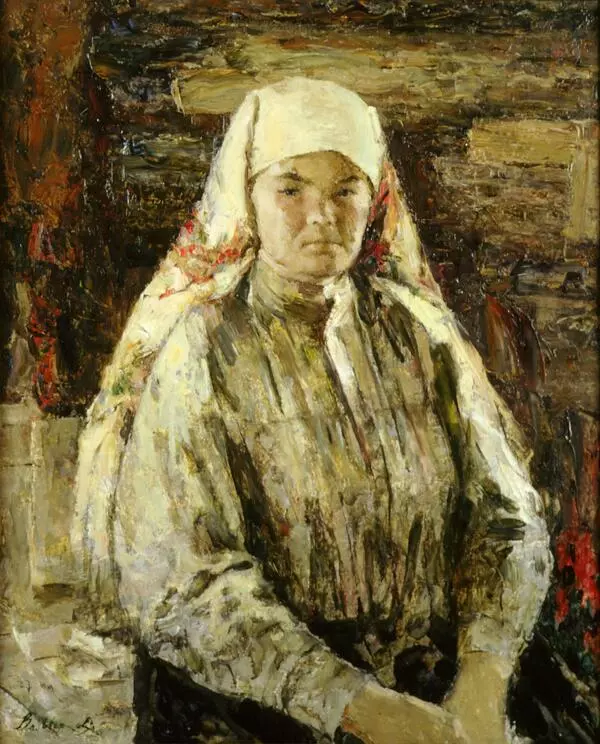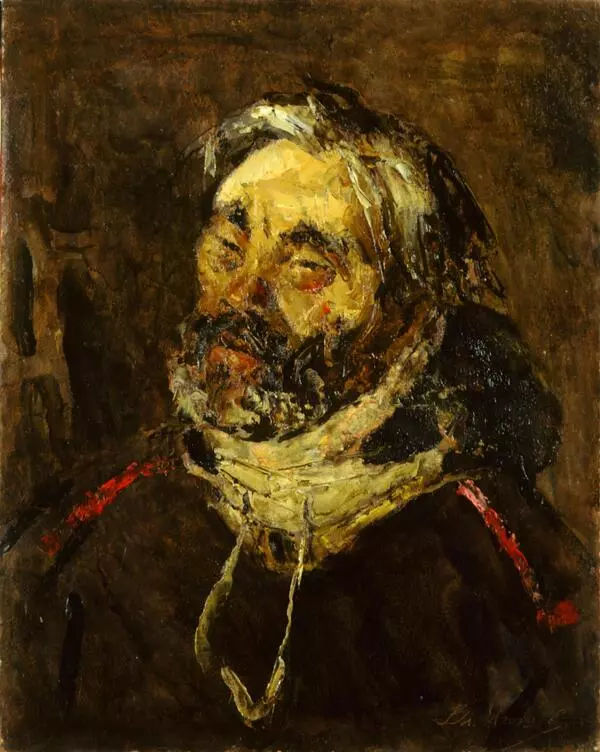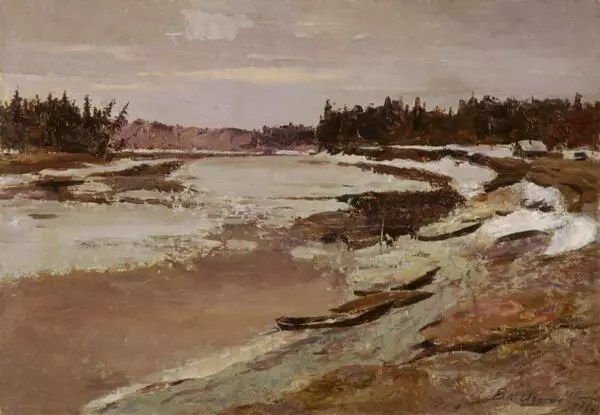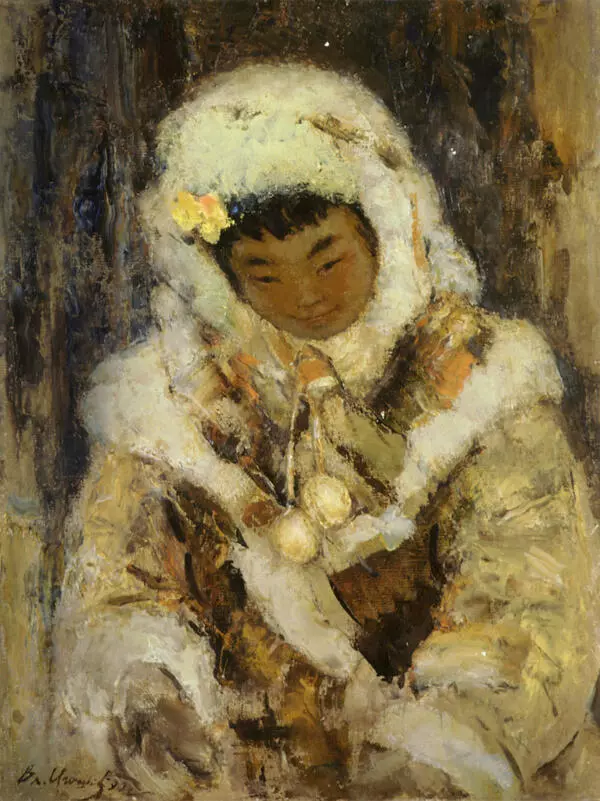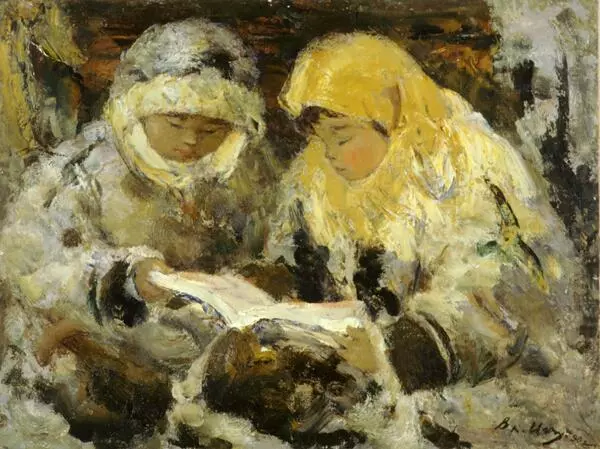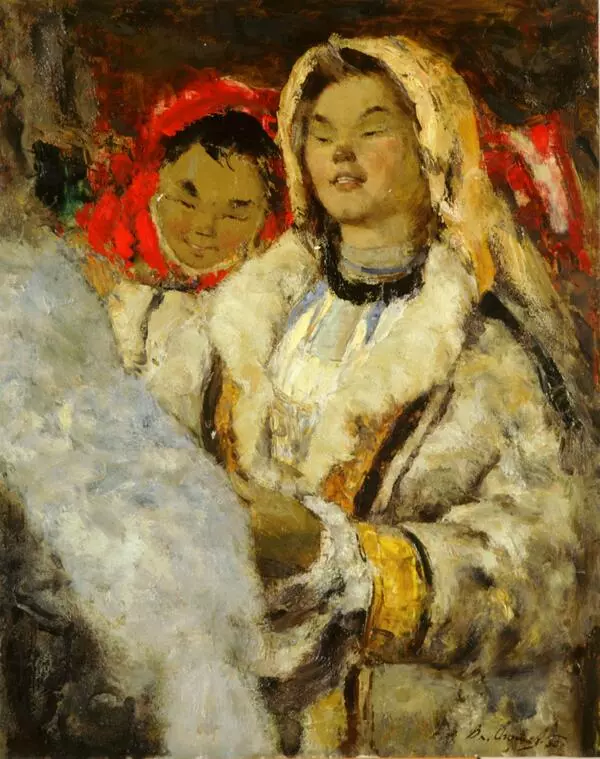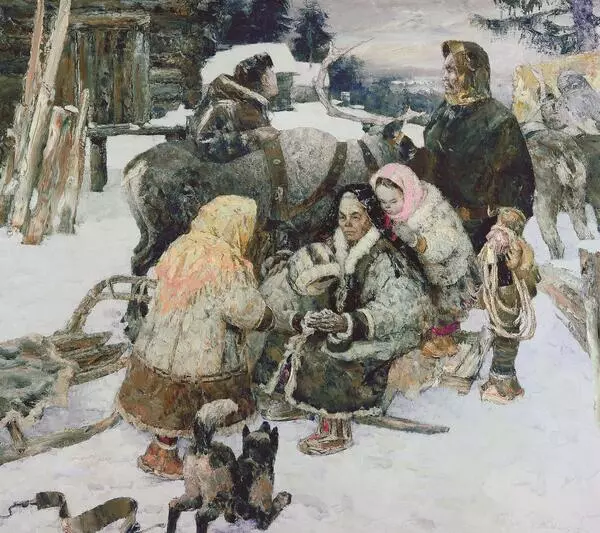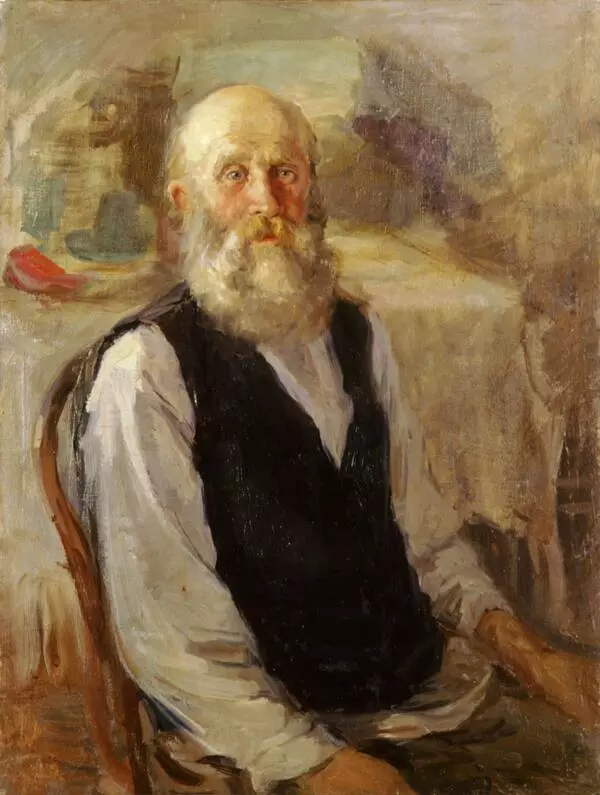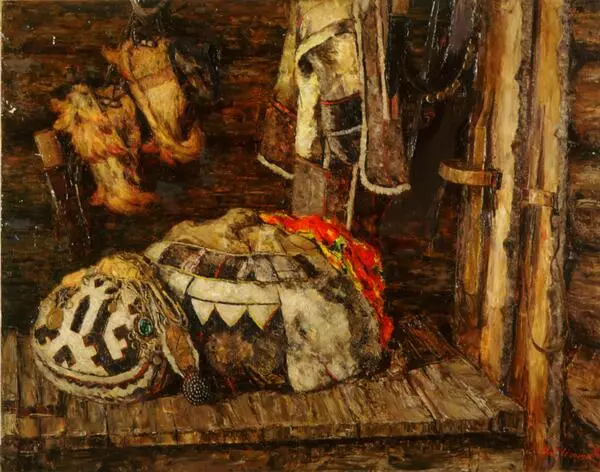Vladimir Igoshev was born in 1921 in Igoshevsky village situated close to Askino in the north of Bashkiria. The future artist studied in Ufa ad the Arts Faculty of the Ufa College of arts. In 1950 he graduated from The Surikov Art Institute in Moscow.
His first solo exhibition took place in Ufa, where he exhibited around 60 of his works during the war time in 1943. Vladimir Igoshev worked in different genres: he painted portraits and self-portraits, worked on landscapes and genre paintings. In 1954 the artist went to the North, to Khanti-Mansi region. Later he travelled all over the USSR and visited many foreign countries.
Vladimir Igoshev painted On the Angara River in 1961 after his trip to Lake Baikal. In the same year Igoshev was awarded the title of the Honoured Artist of the RSFSR. In the painting the artist depicted an ice-free river and a group of mountains topped with snow. He managed to give the feeling of a powerful river and its cold transparent water. The Angara is a large river on the territory of Russia. It drains out of Lake Baikal and flows for two thousand kilometers along Irkutsk Oblast and Krasnoyarsk Krai, and joins the Yenisey. On its way many smaller rivers and streams flow into it.
The title of the river is based on the Mongolian word anga, which means crevice. At first, in the 17th century, Russian travelers started to call the river Nizhnyaya Tunguska, after the Tungusic people.
Valentin Rasputin wrote about the river in his work Farewell to Matyora, where he described the flooding of Matyora island with the same-name village. Back then, during the construction of hydro-electric power stations, vast territories were flooded. Today there are four hydro-electric power stations situated on the Angara. Altogether they form the Angara River hydroelectric station cascade.
The painting On the Angara River is in the collection of the House-Museum of the painter in Khanty-Mansiysk. Paintings by Vladimir Igoshev are also in the collections of The State Tretyakov Gallery, The State Russian Museum, art museums of Kiev, Tashkent, Baku, and in the private collections.
His first solo exhibition took place in Ufa, where he exhibited around 60 of his works during the war time in 1943. Vladimir Igoshev worked in different genres: he painted portraits and self-portraits, worked on landscapes and genre paintings. In 1954 the artist went to the North, to Khanti-Mansi region. Later he travelled all over the USSR and visited many foreign countries.
Vladimir Igoshev painted On the Angara River in 1961 after his trip to Lake Baikal. In the same year Igoshev was awarded the title of the Honoured Artist of the RSFSR. In the painting the artist depicted an ice-free river and a group of mountains topped with snow. He managed to give the feeling of a powerful river and its cold transparent water. The Angara is a large river on the territory of Russia. It drains out of Lake Baikal and flows for two thousand kilometers along Irkutsk Oblast and Krasnoyarsk Krai, and joins the Yenisey. On its way many smaller rivers and streams flow into it.
The title of the river is based on the Mongolian word anga, which means crevice. At first, in the 17th century, Russian travelers started to call the river Nizhnyaya Tunguska, after the Tungusic people.
Valentin Rasputin wrote about the river in his work Farewell to Matyora, where he described the flooding of Matyora island with the same-name village. Back then, during the construction of hydro-electric power stations, vast territories were flooded. Today there are four hydro-electric power stations situated on the Angara. Altogether they form the Angara River hydroelectric station cascade.
The painting On the Angara River is in the collection of the House-Museum of the painter in Khanty-Mansiysk. Paintings by Vladimir Igoshev are also in the collections of The State Tretyakov Gallery, The State Russian Museum, art museums of Kiev, Tashkent, Baku, and in the private collections.

